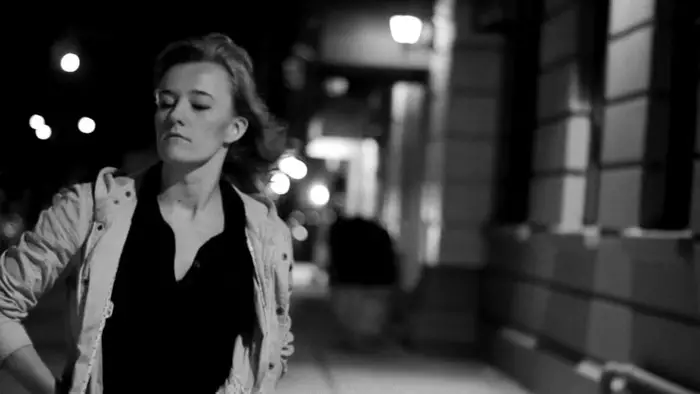
Tymon Brown presents the harsh realities of three women in his short film, No Number. The first, Interloper, is the story of the youngest and the only daughter of three children “celebrating” her birthday. This brief story points out the daughter’s alienation as she is the “odd one out” compared to her two brothers.
Rabbit Warren is the longer of the three stories and the most complex. Our protagonist is a young socialite living alone in the big city with help from her parents’ financial support. While visiting a nightclub, our protagonist is seduced by the lead singer of the band performing that night. She then meets another woman, who quickly becomes her new best friend. As both relationships grow in intensity, her two new loves ultimately clash leading to an unexpected ending.
No Number ends with And Daphne Holds The Chase—the brief story of a young woman walking home at night in the big city and hyper-aware of her surroundings, those around her, and vigilant about securing her apartment when she arrives.

“…her two new loves ultimately clash leading to an unexpected ending.”
Unlike his other short films, Tymon Brown presents an anthology of experiences unique to being a woman rather than a single narrative. Like his other work, Brown’s stories are told through the experiences of his characters and rarely through dialogue, and never through expository dialogue. By focusing on an individual’s story, the experience feels authentic and never preachy.
Brown divides his story into chapters, but each one presented with its own cinematic style. The style of Interloper is the traditional style of storytelling of the three. Rabbit Warren feels more like a music video as the story’s varied soundtrack plays an essential role in the narrative and includes intriguing use of silence. And Daphne Holds The Chase is given the black and white treatment turning the act of walking home into a nighttime thriller. As always, Tymon Brown has much to say and uses very few words to say it, which makes for fresh and engaging storytelling.

"…has much to say and uses very few words to say it..."




[…] Source link […]